KZ PLASZOW
KZ Plaszow
Construction of the camp began in the summer of 1940 and there were two Jewish cemeteries on the site, one on Abraham Street and one on Jerozolimska Street. During the construction work, the gravestones were used to fortify the camp road. At the beginning, Plaszow was a forced labor camp, officially named “Forced Labor Camp Plaszow of the SS and Police Leader in the Krakow District”. The later Plaszow concentration camp emerged from the evacuation of the Krakow ghetto in March 1941. The camp reached its maximum size in 1944 with 81 hectares and 24,000 prisoners.
The commandant of the camp from February 11, 1943 was SS-Hauptsturmführer Amon Göth.
One of the camp commandant’s morning activities was to shoot at working with a precision rifle. As commandant of Plaszow, he earned himself the nickname “Butcher of Plaszow” and was personally responsible for the brutal treatment of prisoners, killing at least 500 people himself. The Americans, who had captured Göth in the SS sanatorium in Bad Tölz, extradited him to Poland. After a trial at the National Court in Krakow, Göth was sentenced to death by hanging. The sentence was carried out in Krakow on September 13, 1946 and the prisoners were forced to work in various workshops, in the brickworks, at the airport in Rakowice and in Oskar Schindler’s enamelware factory. There were several mass graves of prisoners who died from murderous labor, disease and hunger on the camp grounds. Due to the systematic removal of traces by the SS, these were exhumed in the summer of 1944 and all the bodies were burned. The camp was liberated by the Red Army on January 20. Göth was hanged in Krakow on September 13, 1946. The number of victims of the camp is estimated at around 8000 people, mainly Jews.
Plaszow today
The contrast to Auschwitz could not be greater, unfortunately nothing has been preserved or reconstructed in Plaszow. There is a lack of any signage that could make orientation easier. The area of the former camp is now very neglected.
The outlines of the former Jewish cemetery, the camp commandant’s house and the SS guardhouse can still be seen.
The “Memorial to the Victims of Fascism in Krakow” stands on the edge of the former camp. The seven-metre-high sculpture shows five people standing side by side, their heads bent towards the ground under the weight of a shouldered block of stone.
In addition to the highly visible monument, there are also two memorial plaques. One commemorates the Hungarian Jewish women who were deported from Plaszow to Auschwitz and murdered there. The other was donated by the Jewish community in Krakow and commemorates
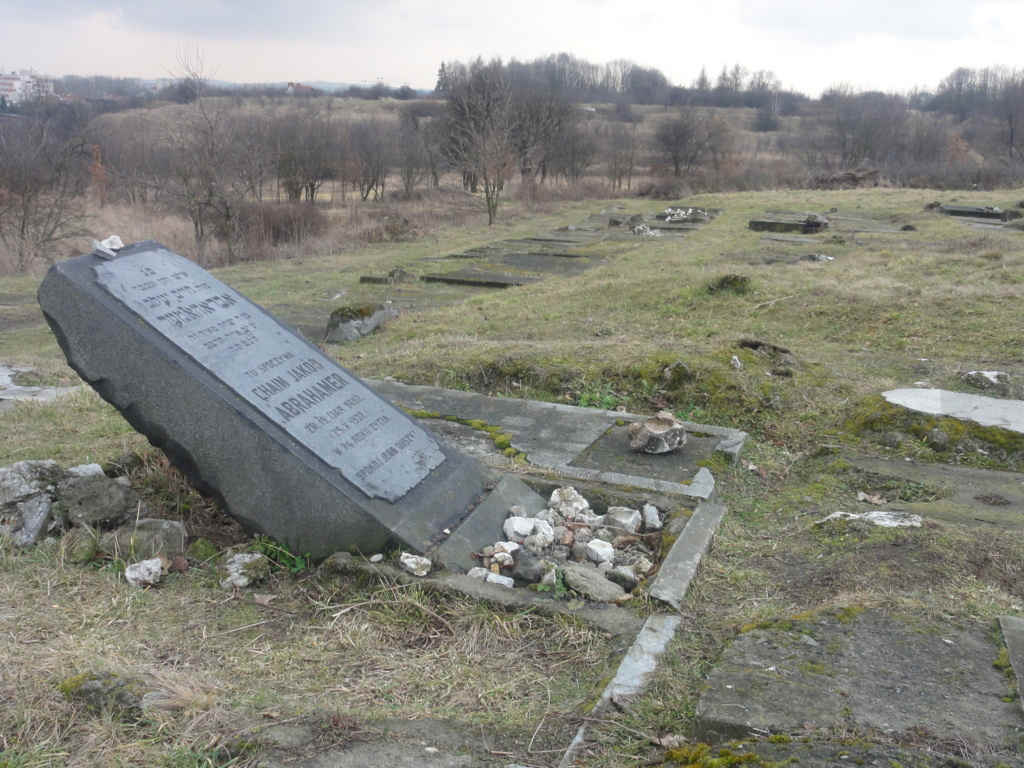
Cemetery in Plaszow, the only surviving stone of Chaim Jakob Abrahamer. He was a relative of the director Roman Polanski.
Polanski survived the Krakow ghetto as a child.
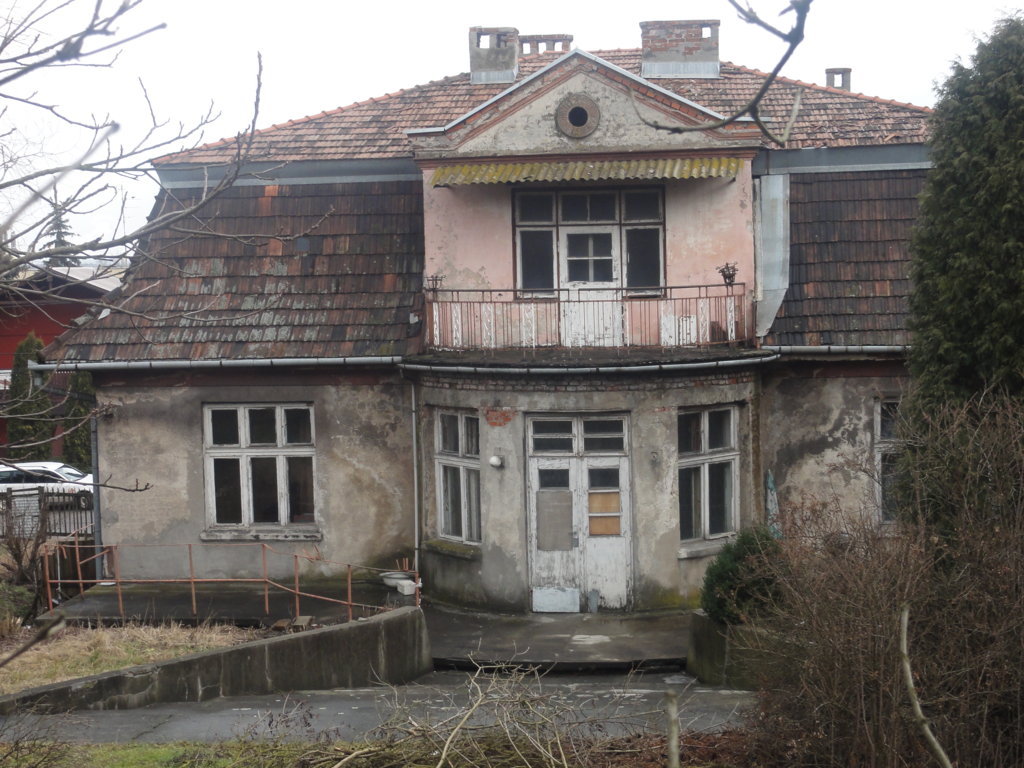
House of camp commandant Amon Goeth in Heltmana Street (2014)
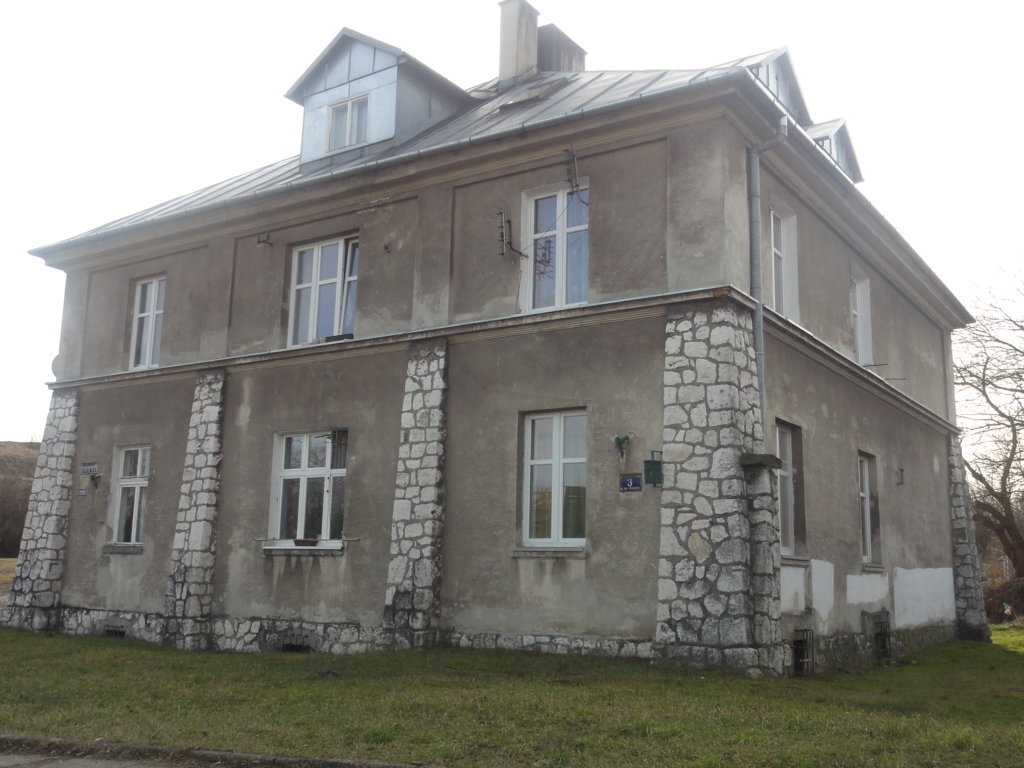
So-called “gray house” – SS officers’ house with torture cellar and cells (until 1939 the seat of the Jewish burial fraternity)
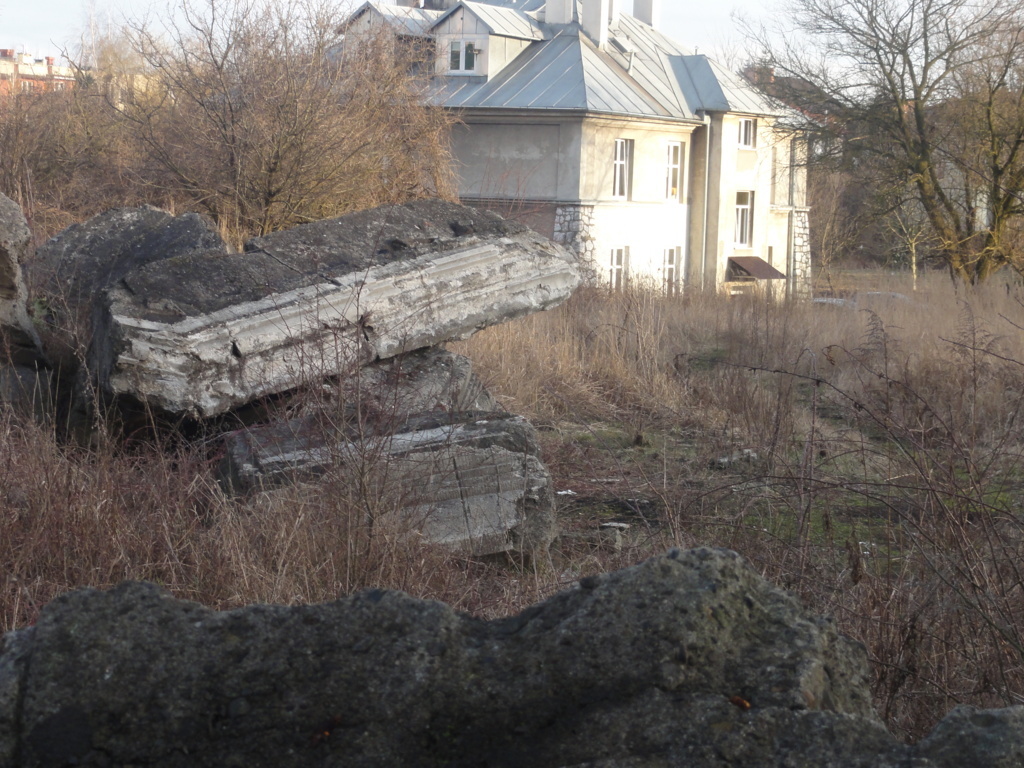
Ruins of the burial hall of the Jewish cemetery of Plaszow in Abrahama Street. It was blown up in 1944, Amon Goeth, the camp commandant at the time, turned this event into a spectacle where numerous spectators were invited.
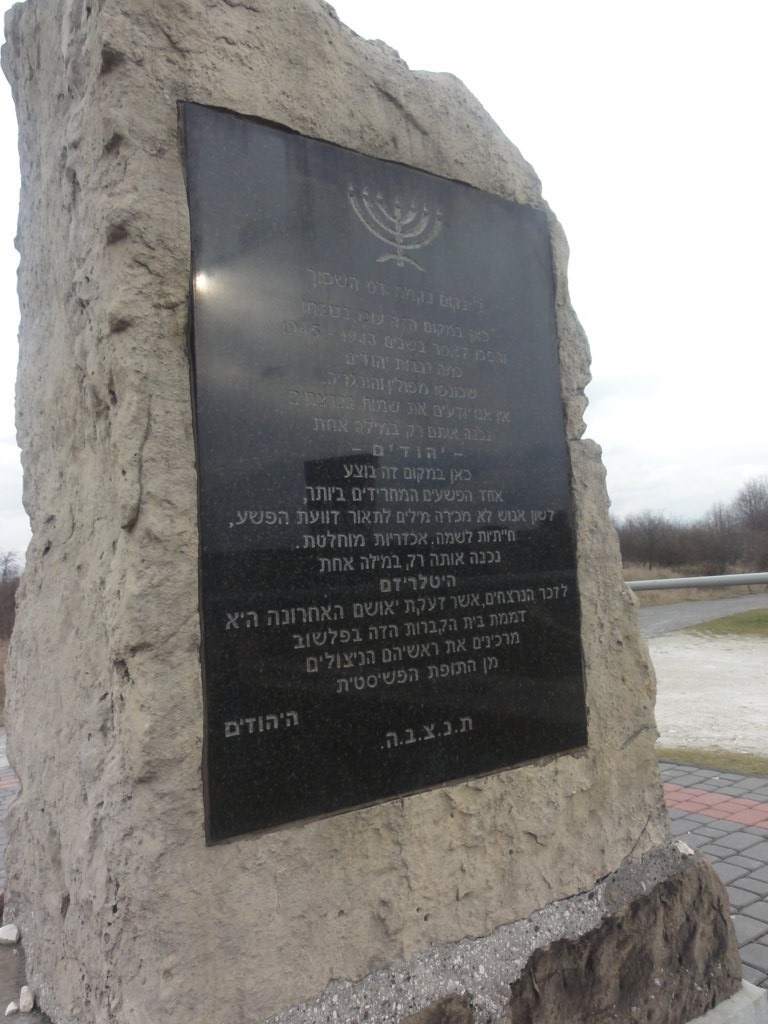
Memorial to the Jews murdered in the camp, donated by the Jews of Krakow.
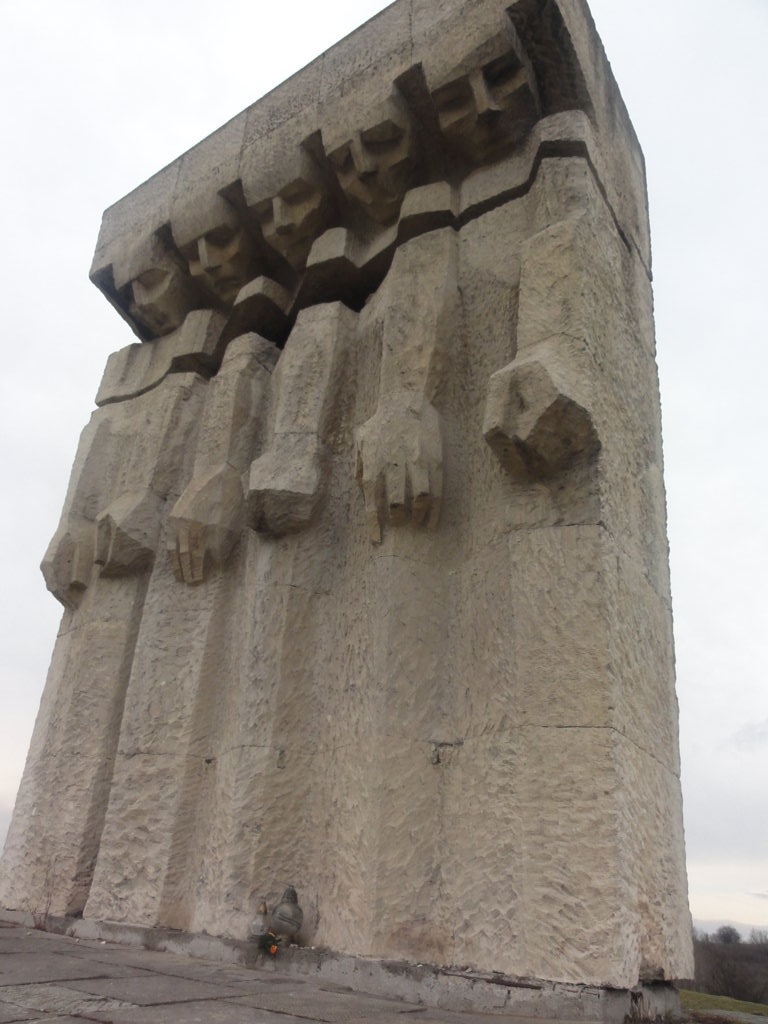
Memorial at the Plaszow concentration camp memorial, in memory of the people of all nationalities who were murdered in the camp.
- Guided tour in English
Jewish ghetto & Schindler's enamelware factory
KZ Plaszow
Literature
Andrea Löw, Markus Roth: Juden in Krakau unter deutscher Besatzung 1939–1945
Mieczysław Pemper, V. Hertling, M. Müller: Der rettende Weg. Schindlers Liste – die wahre Geschichte.
Wolfgang Benz, Barbara Distel: Der Ort des Terrors. Geschichte der nationalsozialistischen Konzentrationslager.